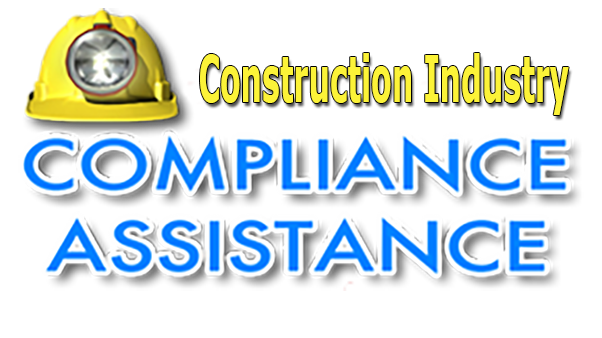
More Resources—Stormwater
EPA Stormwater Website. Overview of EPA's stormwater program.
Federal Environmental Requirements for Construction. This guide provides information on federal environmental requirements for construction projects. It is written primarily for owners of construction projects and for general contractors who supervise construction projects. Subcontractors also may find the information useful. The companion MYER Guide provides much more detail.
Office of Water Effluent Guidelines: Construction and Development website. This web page covers EPA effluent guidelines rules for construction and development.
Managing Your Environmental Responsibilities (MYER). A Planning Guide for Construction and Development This document explains in detail the environmental obligations that construction companies can face across the various federal laws (stormwater, air, wetlands, waste, etc.)
International Erosion Control Association. The International Erosion Control Association is a non-profit, member organization that provides education, resource information and business opportunities for professionals in the erosion and sediment control industry.
National Pollutant Discharge Elimination System (NPDES) Compliance Inspection Manual. The National Pollutant Discharge Elimination System (NPDES) Compliance Inspection Manual provides guidance on NPDES inspections of wastewater treatment plants, stormwater industrial and construction sites, pretreatment facilities, biosolids handling and treatment facilities, Concentrated Animal Feeding Operations (CAFOs), municipal wastewater collection systems (combined and separate from storm water) as well as pollution prevention and multimedia concerns. These procedures are fundamental to the NPDES compliance program and provide inspectors with a method for conducting inspections. Stormwater is covered in Chapter 11.
NPDES eReporting. EPA has published the National Pollutant Discharge Elimination System (NPDES) Electronic Reporting Rule. Visit this page to learn more about the rule. Included are training webinars.
Stormwater Pollution Prevention Plans
Developing a Stormwater Pollution Prevention Plan (SWPPP). Instructional resources for developing effective Stormwater Pollution Prevention Plans (SWPPP).
NRDC Water-Smart Cities. NRDC advocates for smarter water policies that promote water efficiency and improve water management in communities across the United States.
Erosion Control Technology Council (ECTC). ECTC consists of a broad range of professions and specialties, including site engineers, consultants, regulatory agencies, earthwork and seeding contractors, erosion control product suppliers and manufacturers. The most rapidly growing segments within the industry include the Rolled Erosion Control Products (RECPs), Hydraulic Erosion Control Products (HECPs) and Sediment Retention Fiber Rolls (SRFRs) markets.
Caltrans Construction Site Best Management Practices (BMP) Manual (2017). This manual provides instructions for the selection and implementation of construction site best management practices (BMPs). Caltrans requires contractors to identify and utilize these BMPs in the preparation of their SWPPP or WPCP. Construction site BMPs are best conventional technology/best available technology BCT/BAT)-based BMPs that are consistent with the BMPs and control practices required under the Clean Water Act.
New Jersey Stormwater Best Management Practices Manual (2016). The Stormwater Management rules, N.J.A.C. 7:8 specify stormwater management standards that are mandatory for new major development. The New Jersey Stormwater Best Management Practices Manual (BMP manual) is developed to provide guidance to address the standards in the proposed Stormwater Management Rules, N.J.A.C. 7:8. The BMP manual provides examples of ways to meet the standards contained in the rule. The methods referenced in the BMP manual are one way of achieving the standards. An applicant is welcome to demonstrate that other proposed management practices will also achieve the standards established in the rules. The BMP Manual is a developed by the New Jersey Department of Environmental Protection, in coordination with the New Jersey Department of Agriculture, the New Jersey Department of Community Affairs, the New Jersey Department of Transportation, municipal engineers, county engineers, consulting firms, contractors, and environmental organizations.
Pennsylvania Handbook of Best Management Practices for Developing Areas. This non-regulatory handbook features thirty-seven (37) water quality and wildlife habitat-improving practices that can be used to develop site plans to meet the requirements of the Pennsylvania regulations for erosion control and local stormwater control regulations.
National Stormwater Best Management Practice Database. This database is a centralized clearinghouse of BMP data and information, that will help developers, builders, engineers, and planners improve BMP selection and design and ultimately lead to advances in stormwater management. The database provides a public platform for sharing information on BMPs and assists water quality professionals in choosing effective solutions for their situation based on previous studies and proven methods. It contains searchable information on more than 200 studies, including test site locations, researchers, design parameters, watershed characteristics, costs, and precipitation and flow data. In addition to the database, the website offers a variety of tools and information. Key features include summaries of BMP performance by type (e.g. retention pond, biofilter), monitoring guidance, interpretive reports, and background documentation. New features and studies are continually being added. The database is managed by the Water Environment Research Foundation with the assistance of the American Society of Civil Engineers and other organizations.
The Low Impact Development Center, Inc. website. Provides information to stormwater Phase II communities on integrating low impact development (LID) strategies into their compliance programs.
Total Maximum Daily Loads (TMDLs) and Stormwater. EPA web page that links to numerous resources for developing stormwater-source TMDLs and implementing then in NPDES Permits.
Hoja Informativa sobre Mejores Prácticas de Gestión (MPG) de Construcción en Puerto Rico. Provee información en español sobre mejores prácticas de gestión de construcción con enfoque en la protección de especies amenazadas y en peligro de extinción y hábitats críticos en Puerto Rico.
